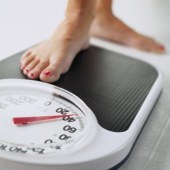
THURSDAY, May 13 (HealthDay News) — You know you need to lose weight. And you know you’re ready, which is more than half the battle. But you still have to pick from a seemingly endless array of weight-loss plans.
How to decide?
Experts who counsel overweight patients say there are two keys:
- Know yourself. That means being honest about what you will and won’t do, long-term.
- Evaluate and pick the diet that best suits you, watching out for key phrases or promises that are probably too good to be true.
Choosing a weight-loss plan that’s going to work “takes some self-reflection,” said Amy Jamieson-Petonic, a registered dietitian who directs wellness coaching at the Cleveland Clinic and is a spokeswoman for the American Dietetic Association.
“Are you an online type who likes to chat?” she said. “Or do you want a formal meeting?”
Some people find that plans that offer prepared meals help them stick to the plan because it takes the whole portion-control task out of their hands, said Suzanne Farrell, a registered dietitian in Denver who also is an association spokeswoman.
As far as accountability, Jamieson-Petonic said, it’s important to figure out if you’ll do all right by weighing yourself at home — and can be honest about it — or if you would do better by going somewhere where your weight would be charted by someone else.
“Think about and analyze how you currently eat,” said Judy Rodriguez, a professor of nutrition at the University of North Florida and author of The Diet Selector, in which she rates diets based on long-term flexibility and other factors.
“We are all unique in our food preferences, values, lifestyle, etc., so it seems like trying to ‘fit’ yourself into someone else’s plan is likely to have only short-term benefits, if any,” Rodriguez said.
Once you know what features you need in a weight-loss plan, look closely at the plans that seem to fit. And be sure that ones you are interested in are scientifically sound, Farrell said.
Key factors to look for, she said, include:
- Does the plan include a variety of foods?
- Does it include high-fiber foods?
- Does it educate you on the value of foods that are low in saturated fat?
- Does it tell you about “good” fats, such as olive oil?
In addition, Farrell said, “look for a plan that emphasizes physical activity and encourages eating regularly throughout the day.”
And watch out for claims and promises that sound too good to be true, Farrell added. A common one, she noted, is rapid weight loss. “It should be no greater than two pounds a week,” she said.
She’s also skeptical of plans that say no exercise is needed. Weight loss means a lifestyle change, she said, and maintaining the loss is best done by keeping an eye on food intake and on staying active.
Another red flag, Farrell said, is a plan that totally eliminates foods or food groups.
But whatever plan you choose, focus on making small changes to your eating and activity habits, Rodriguez said. Look at what you currently eat and then figure out how you could make small healthy changes.
Just substitute low-fat crackers for the doughnut you usually eat, she said.
“Do this for one to two weeks, then go back and make another small change,” Farrell said. “Keep doing this. Continuing self-improvement is a great thing.”
Then do the same for physical activity, she said. Try tracking the steps you take in a day with a pedometer, and then increase them.
The bottom line? The experts agreed that if your diet plan is suited to you, chances are you’ll follow it longer, take the weight off at a slow but steady pace and maintain the loss.
More information
The American Dietetic Association has more on healthy eating.

